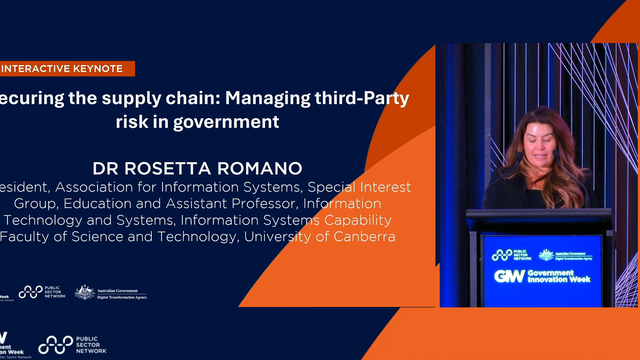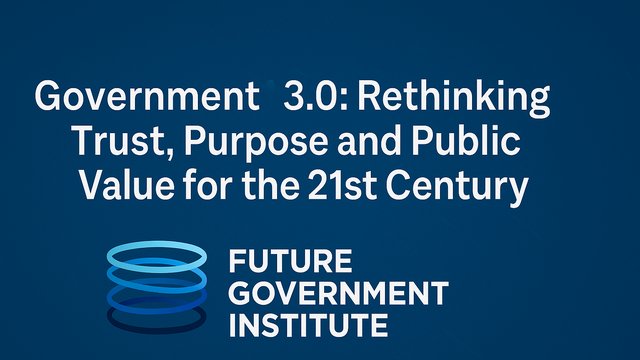
The crack-down is finally happening - governments the world over are recognising the growing need to make their services more inclusive and accessible to ALL citizens regardless of socioeconomic background, location or physical and mental abilities. How did this realisation take so long? The fact has always been that inclusive service delivery not only enhances efficiency but also ensures that public services reach those who are historically underserved or marginalized and now we’re finally beginning to see this reality reflected in government services and their ambitions for the future.
For today and looking at future initiatives, more emphasis is being placed on using technology, human-centered design, codesigning services with citizens, diverse talent pipelines, policy changes and a focus on mental health to address these inclusivity gaps. Let’s discover in more detail exactly how governments are accomplishing this feat.
Let’s Focus on User-Centric Design
At the core of inclusive government services lies simplifying processes through technology. By applying human-centered design principles, governments can create dynamic, user-friendly interfaces that streamline interactions for citizens. A key example is simplifying the process of accessing public benefits, such as healthcare or housing. By building digital platforms that are easy to navigate, individuals from all backgrounds can more easily access the assistance they need, regardless of their tech literacy or socioeconomic status. These platforms should also be designed to adapt to diverse needs, including those with disabilities or limited digital access.
Codesigning to Ensure Visibility to All
Inclusive services must be shaped by those who use them. Governments are increasingly adopting a co-design approach, where the voices of underserved communities are integrated into the development and implementation of public programs. This approach then guarantees that racially, ethnically diverse, and marginalized groups are not just passive recipients of services, but active participants in shaping them so governments can create more relevant and effective programs that address real-world challenges and promote greater trust and engagement from these communities.
Talent Must Be Diverse
In addition to the design of services, the workforce responsible for delivering them must also reflect the diversity of the population it serves. Agencies need to make deliberate efforts to build a more diverse talent pipeline, actively recruiting young professionals from various backgrounds. A more diverse government workforce ensures that perspectives from different communities are included in decision-making processes. This diversity won’t just enrich the public sector but it will also help to combat institutional biases that might get in the way of fair and equal access to services.
Leaders to Combat and Help Banish Systemic Biases!
Speaking of biases – let’s delve into that one a bit further. One of the most critical responsibilities of governments is to ensure that services are provided equitably, to make up for both biases from the past and present. If we’re going to commit to inclusive services, it is the act of choosing leaders to enable inclusion that kick starts the movement and keeps it consistent. These leaders know they have no choice but to make conscious decisions to challenge the established patterns of exclusion, such as biased algorithms or inequitable access to public services like healthcare or education – otherwise known as Diversity Champions. By critically examining the systems that reinforce inequality, governments can create more just and equitable outcomes for all citizens, ensuring that no one is left behind.
Diversity and Inclusion in Public Policy:
A one-size-fits-all approach doesn't work in a diverse society. Policymakers must reflect this reality. So policies are being designed to be more inclusive by involving marginalized groups in decision-making processes. It is no longer just about ticking boxes—it's about making sure that policies truly reflect the diverse needs of society with particular focus on gender, ethnicity, and socioeconomic status. How exactly is this being done? Governments are hosting community consultations, working groups, and advisory panels where people from marginalized backgrounds can share their lived experiences. These conversations help shape policies that are more equitable and relevant to all citizens.
Mental Health and Wellbeing Services:
The importance of mental health has surged across the globe (for good reason!) and inclusive mental health services provided by the government are no exception. Governments are now investing in digital tools and resources that prove a commitment to provide mental health support, particularly for vulnerable populations. They are embedding mental health support within schools, workplaces and ensuring that mental health services are more widely available, especially in underserved areas like rural communities. Governments are training mental health professionals to provide culturally sensitive treatment that respects different beliefs and practices and moreover, specific programs are being designed for groups that have historically been underserved in mental health care, such as LGBTQ+ communities, people with disabilities, and indigenous populations.
A Future with Cultural Inclusion at Its Heart
Governments have a duty to serve all citizens equitably, and this requires a continuous effort to innovate and challenge traditional structures. By combining technology, human-centered design, and diverse representation in the workforce, governments can drive meaningful change and improve outcomes for underserved communities. The future of public service delivery lies in creating a culture of inclusion—one that not only acknowledges but actively addresses the diverse needs of all its citizens.
Are you looking to prioritise inclusion and accessibility in your team? Look no further. Learn more and register for these valuable courses offered at our online PSN Academy: Improving Digital Accessibility in the Public Sector training here and Disability Inclusion in the Workplace training here.

































